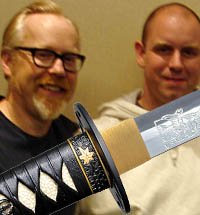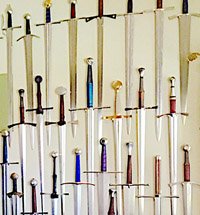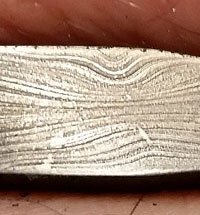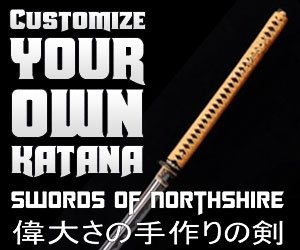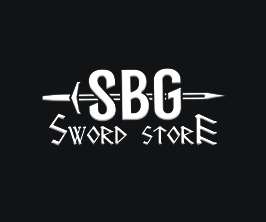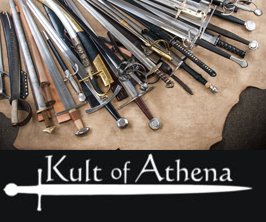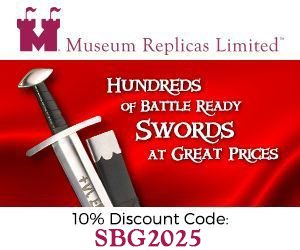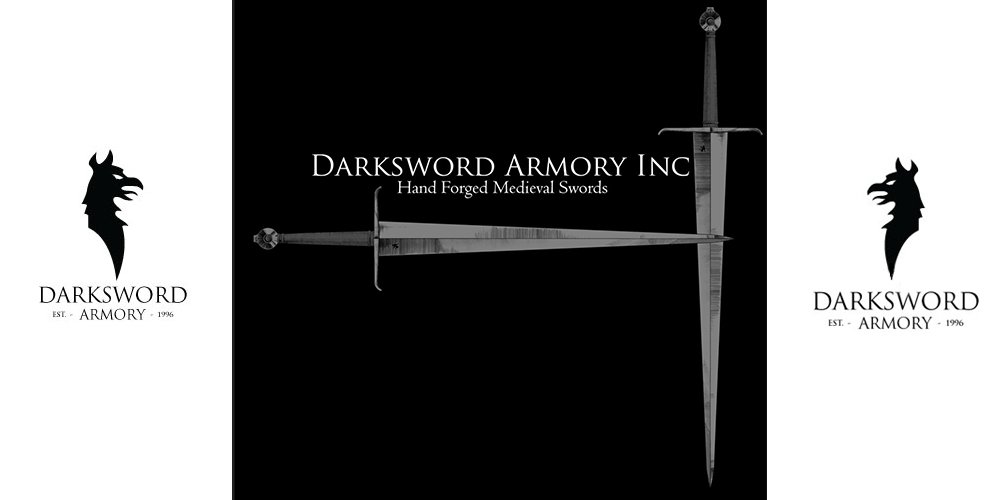Recent Articles
-
Real Katana Pushed to the limits
Mar 07, 25 01:16 AM
Real Katana tested to its limits
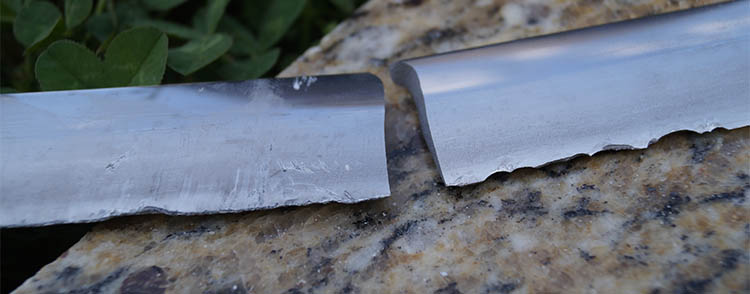 Now THAT is testing to destruction
Now THAT is testing to destructionA real Katana can and has been defined here as a hand forged, single edged blade that has been 'differentially hardened'.
That is to say, the blade has been clayed and heat treated so that the edge is significantly harder than the spine - creating the famous 'hamon' temper line real Katana are famous for - and allowing the softer spine to absorb frontal impacts better while keeping a hard and sharp edge..
The downside of this traditional tempering is that while the blade can keep a harder and sharper edge than if it was monotempered (i..e tempered to the same hardness all the way through) - the different hardness's within the blade do not allow it to flex or resist damage as well.
But you do not have to just take our word for it..
In this hands on review, we test a new series of semi-custom swords by respected sword makers 'Ryujin Swords' that are made of a steel that is typically NOT differentially hardened in the traditional way - and push it to and beyond its limits to demonstrate once and for all the strengths and weaknesses of traditional Katana versus modern forging and tempering techniques..
Monotempered vs Differentially Hardened
It cannot be overstated just how important tempering and hardening is to producing the best cutting sword possible.
A sword that has not been properly heat treated will be so soft as to make it impossible to sharpen the edge enough to cut properly (at least more than once) - not to mention so soft that it can actually be bent (and stay bent) with your bare hands..
A real Katana is always heat treated in a very specific way - the spine is covered with clay when it is quenched, resulting in the edge cooling much quicker than the spine and becoming significantly harder as a result.
If the blade is not clayed, but rather heat treated as a single unit - the blade is referred to as being 'monotempered' which makes it able to flex and return to true. This also means that the sword is considerably more resistant to external stressors - so long story short - a monotempered blade is generally much stronger than a differentially hardened one..
So what are the advantages of a differentially hardened blade?
I am glad you asked.

The first is that a blade that has been differentially hardened will have a real hamon temper line as pictured above. In the case of our Ryujin Katana, the hamon is known as a 'suguha' hamon - a straight temper line (there are many other styles, some wavy, others cloud like, but the suguha hamon is one of the most straightforward and common, yet also one of the hardest to get right).
This first characteristic of a real Katana is purely cosmetic - in other words, it looks good - especially because it is authentic. Fake wire brushed on hamon may look similar, but they are not the real thing. And the real thing is very attractive, and appreciated by true connoisseurs of the Japanese sword.
For a direct comparison of what the tempering of a real Katana does to the overall durability of the sword itself - here is a concrete side by side comparison.
The Ryujin Katana we are testing is made from 5160 Spring Steel - that is to say a steel with a carbon content of between 0.55% and 0.65%, hardness of 63 HRC and yield strength of approx 669 MPa.
Lets compare this directly with a Katana made from 1060 carbon steel - same carbon content as 5160 (0.55% to 0.65%), same 'modulus of elasticity' (190-210 GPa) and almost the same ultimate tensile strength (620 MPa for 1060 carbon steel, 724 MPa for 5160 Spring Steel)..
In short, very similar steels with only some fairly minor additional elements (notably chromium and silicon in 5160).
Real Katana Destruction Testing
So what exactly does it take to break a well made real Katana with real hamon? All swords break, even Nihonto, and sometimes at the strangest times. But realistically, what should we expect.
Well, let's see Jason Woodard, sword tester extraordinaire can find out using a Ryujin 5160 Elite blade. You can either watch the video or the breakdown with pics (or both) but it sure is fun to see a real Katana pushed to such brutal limits..
I was asked to harsh test and review a new line of Katana`s that will be made by Ryujin Katana`s.. They have been making their Katana`s from T 10 tool steel.. A very nice steel.. How ever I have always been a big fan of 5160 steel so I was very interested in the chance to put this new katana done in the 5160 through some harsh testing.. My goal was to push it until it broke or failed... When it first arrived it came with a nice display box like their other katana`s do.. I took the Katana out and got a feel for it checking out every inch of the details. My first impressions.. "SOLID" Fittings are very tight..Katana fits well into it`s scabbard.. It is not overly perfect in the wooden pin`s sticking out a bit but still very nice.. The real ray skin under grip is a plus also.. I liked it..
The blade is very well done with a great polish and a very fine edge..Feels like it has good balance as well.. So I was ready to start with the testing... I started out with some cutting shot to test the edge and balance of the katana... I did some cutting on a single gallon jug, four gallon jugs and a full case of waters..
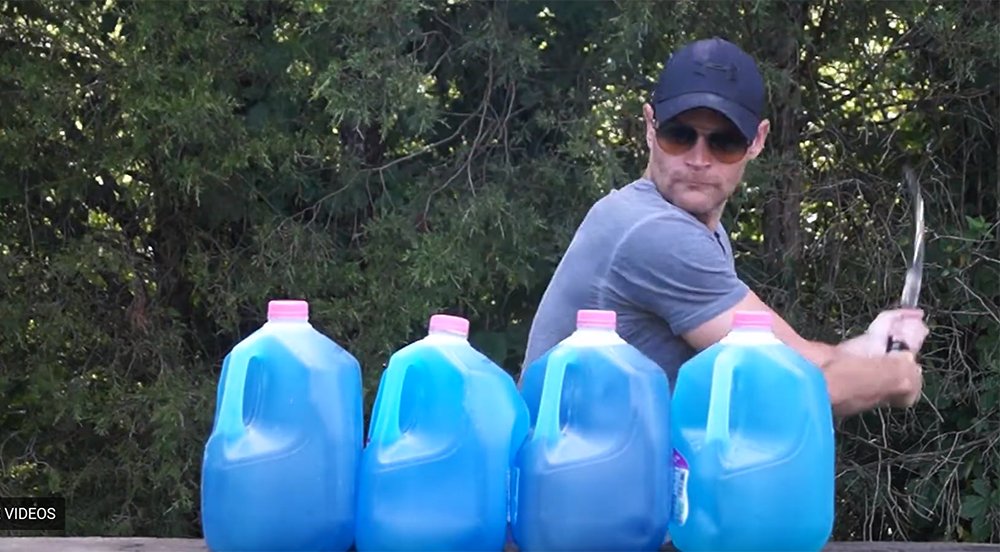
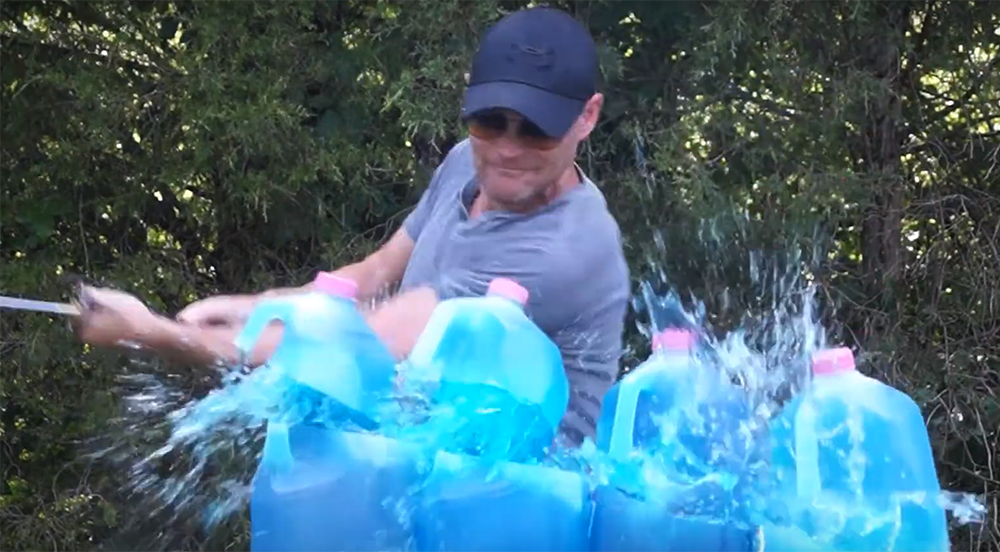
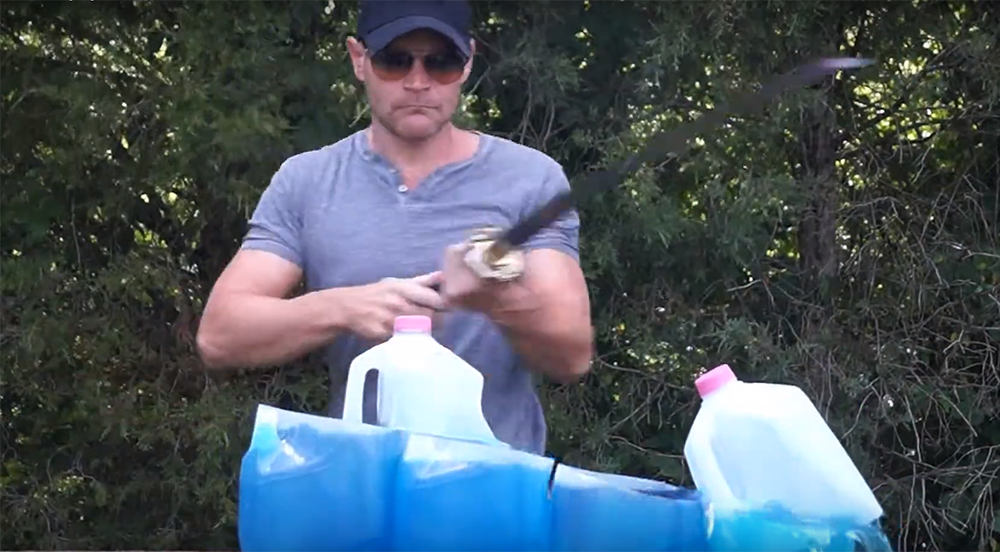
The new Kanata cut through them with no problems at all.. I then test cut a standard cutting matt.. I was able to make four clean cuts on one rolled matt.. The balance on the katana is nice and the factory edge is very sharp.. I was then ready top move onto harsher tests.. To test the tip of the katana and edge I stabbed repeatedly in a steel trash can filled with water and hacked on the side a few blows.. The tip held up well and so did the edge..
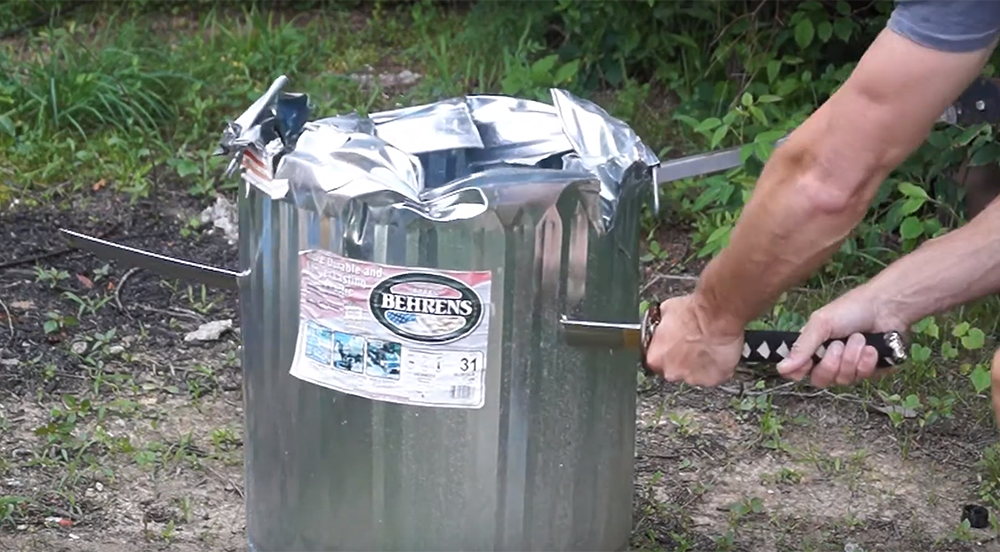
For my next text I struck a metal pole 29 times at various angles and rapidity to test the edge, even see if I could break the katana or knock
the fittings loose ..
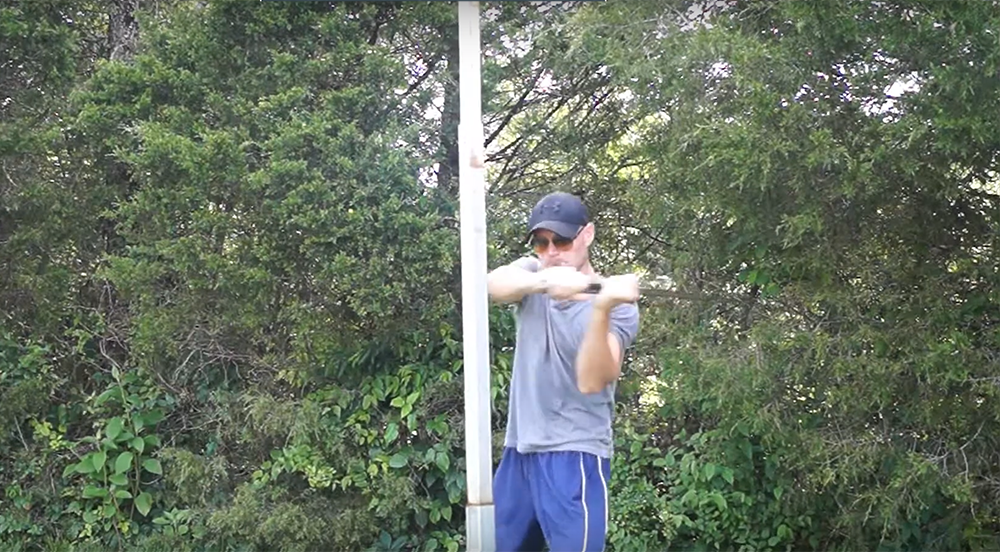
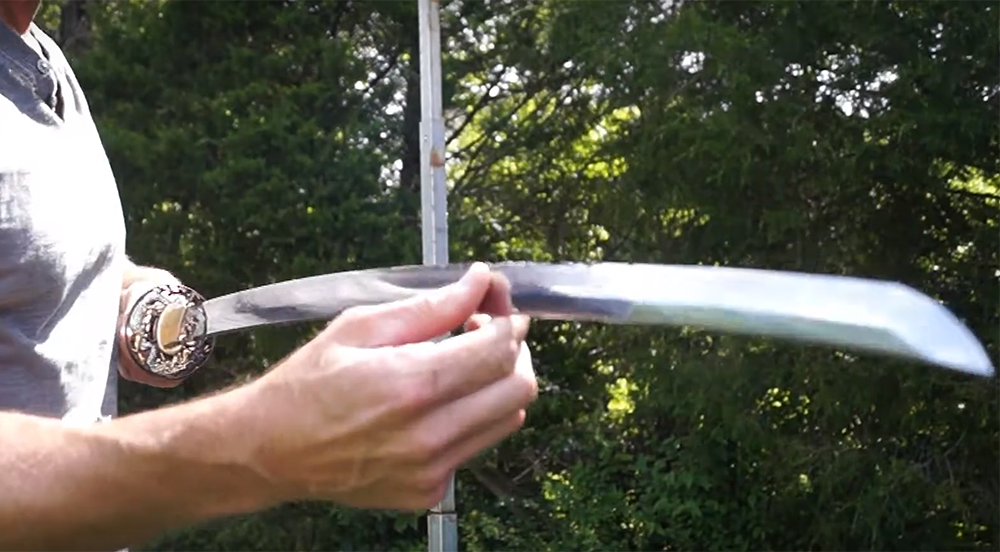 No major chips (benefit of hamon) and no breakages despite goodness knows how many strikes on that steel. Damage as to be expected, but not destruction.
No major chips (benefit of hamon) and no breakages despite goodness knows how many strikes on that steel. Damage as to be expected, but not destruction.After beating the crap out of it.. I was able to cause edge damage to the Katana, chipping out several bits of steel in the process.. As would happen to ANY blade with such a fine edge (though it may well have broken MUCH earlier on), and even the fittings remained tight after all that..!
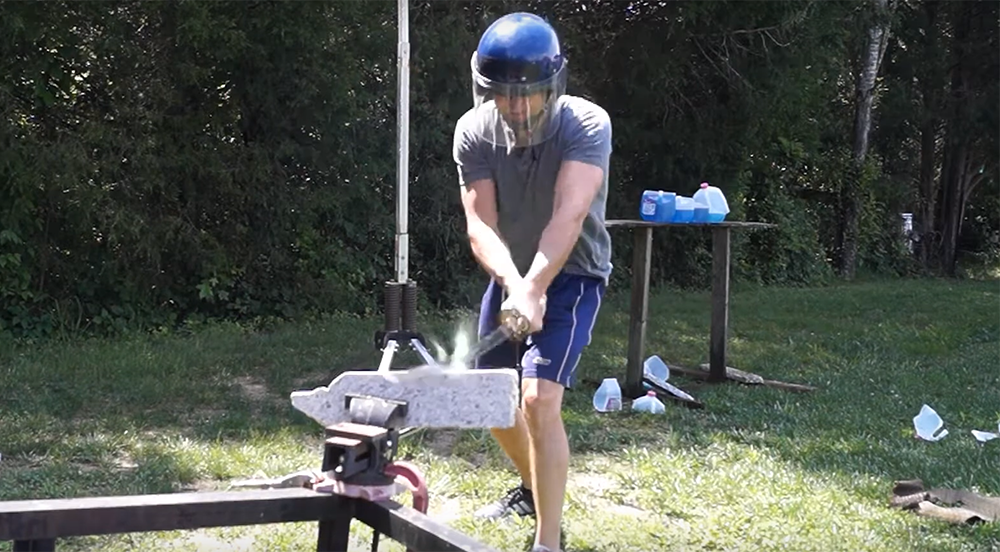
For my last test I struck the katana against a good size piece of very hard granite in a vice many times with a lot of force.. The Katana lasted many blows (well over a dozen).. But we FINALLY were able to break it after 24 strikes at maximum pace to minimize blade recovery time..
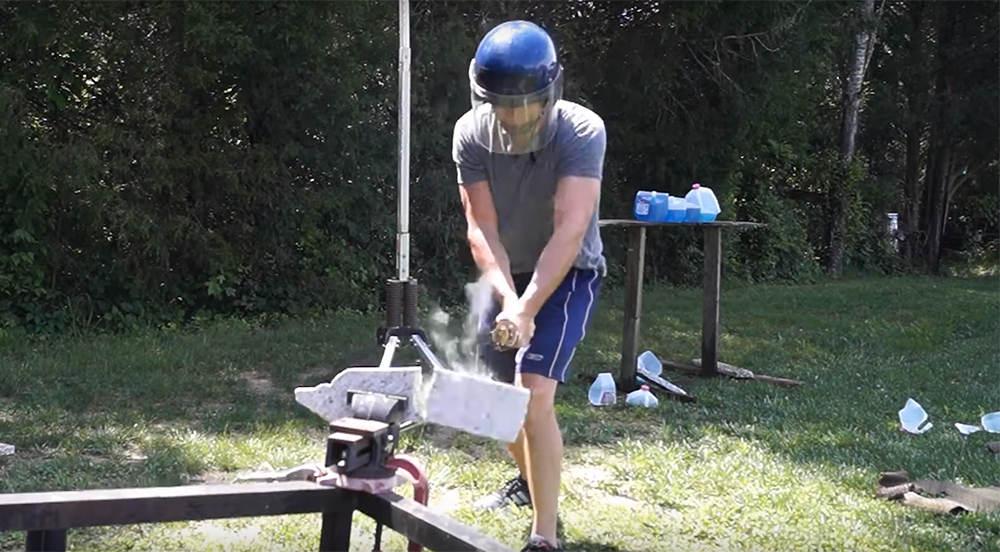 2nd or 3rd strike broke the Granite in half..
2nd or 3rd strike broke the Granite in half..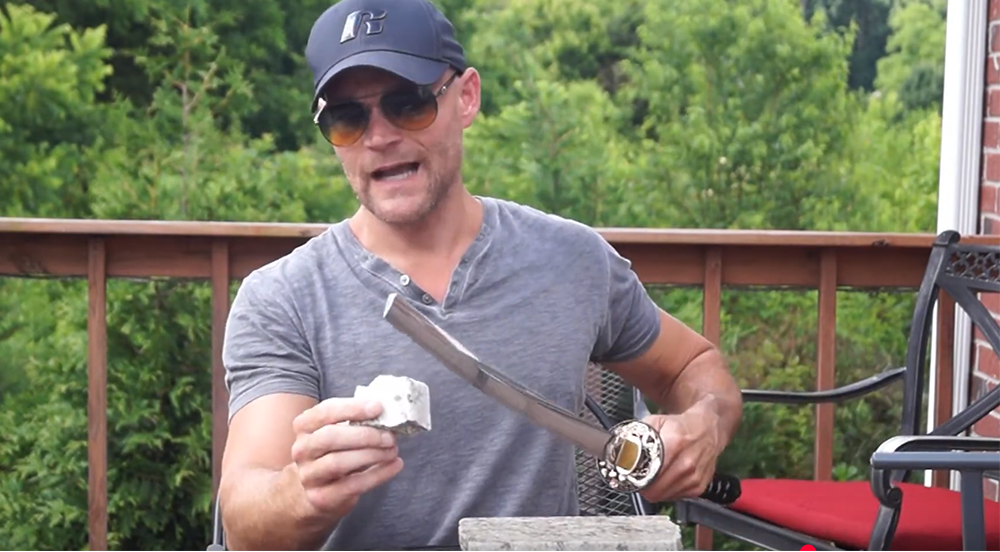 We got there in the end, but this is one tough sword for a traditional blade, that's for sure!
We got there in the end, but this is one tough sword for a traditional blade, that's for sure!Even breaking the granite before finally breaking from my abuse..... The fittings did start to loosen after all that but any katana would... My finale thoughts... I know steel...... I know swords... I know proper heat treating... An I know quality when I have my hands on it.. I have tested hundreds of swords... An the fact that this Ryujin Katana is done in 5160 steel and properly heat treated really shows.. I would recommend them and I will have another for myself.. Thank you for your time.. Jason Woodard
Pros..
- 5160 steel, proper heat treating and strong
- nice well polished razor sharp blade
- tight fittings
- good balance
- good price...
Cons
- Not the best design I have seen in the guard (personal taste)
- did not
like the wooden pins (mekugi) sticking out so far...
CONCLUSION
This sword is built for combat and is most definitely a real Katana. Any one of those strikes on the metal pole could have broken it, any off angle on the granite (and there were a few) and it should have snapped off straight away.
The fact it took all that use and abuse suggests that this is a traditional sword but almost as tough as a monotempered blade, but with a keener edge and traditional, real hamon.
No ratings, as this is a destruction test - but well worth the $330 investment.
WHERE TO BUY
If you like the sword in this demo you can pick it and several other similar traditionally tempered, equally strong blades from the Ryujin Martial Arts Grade selection of the official SBG Sword Store HERE



